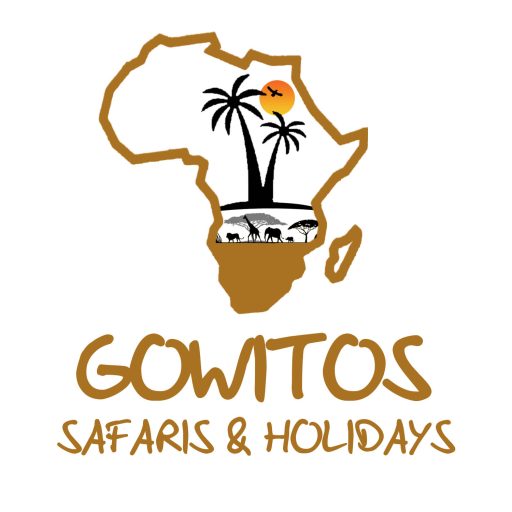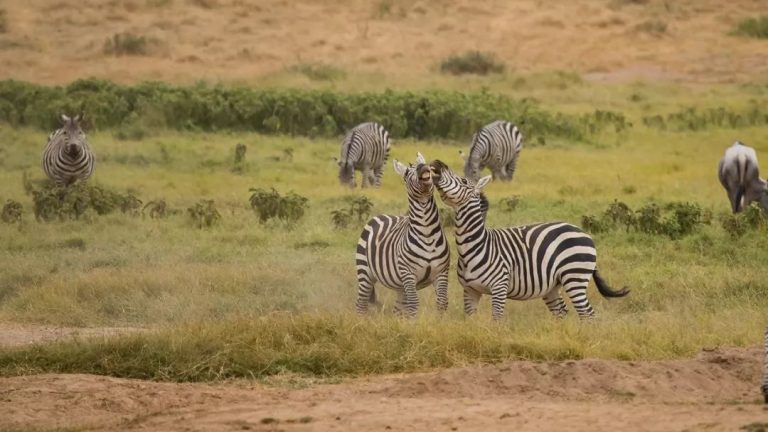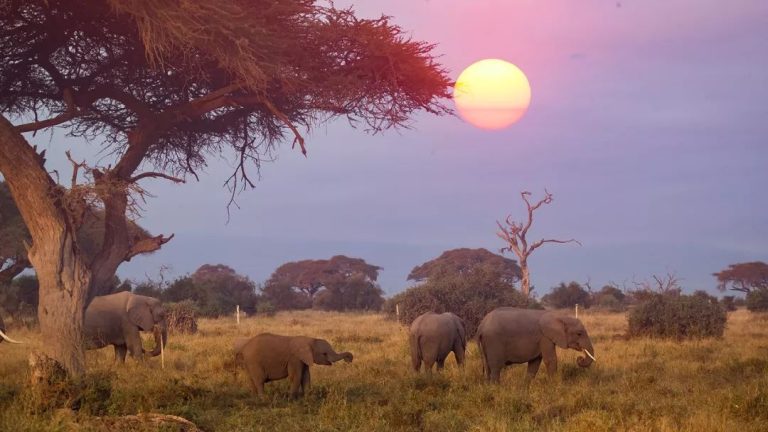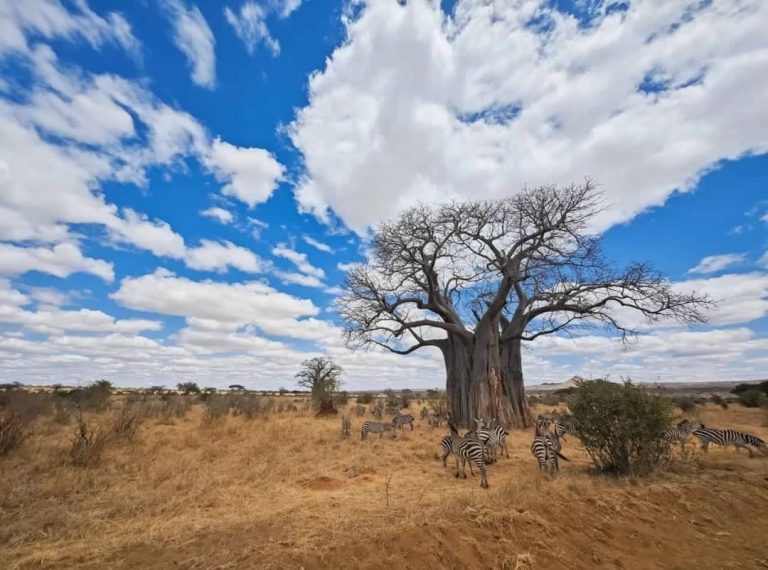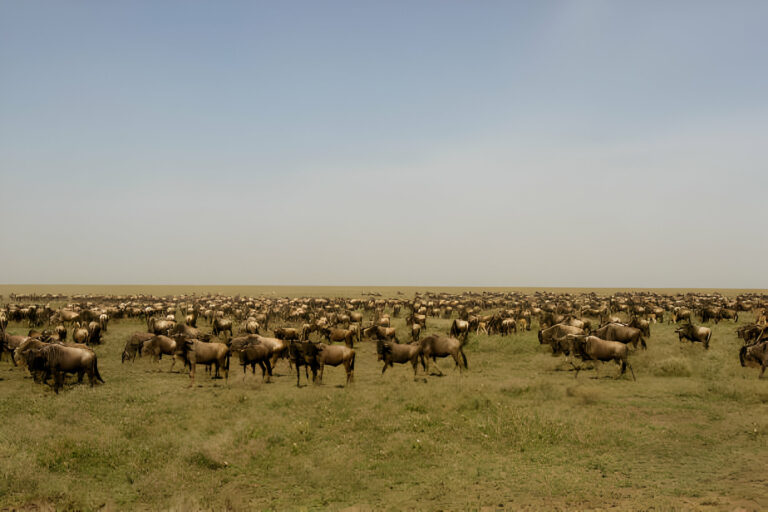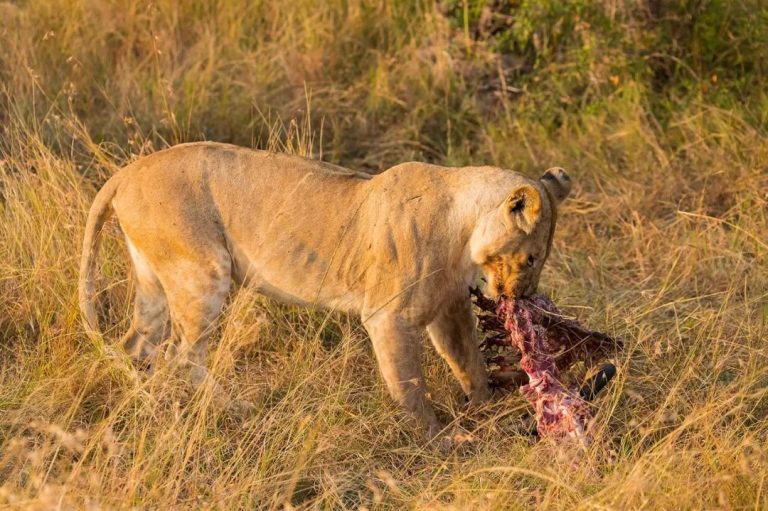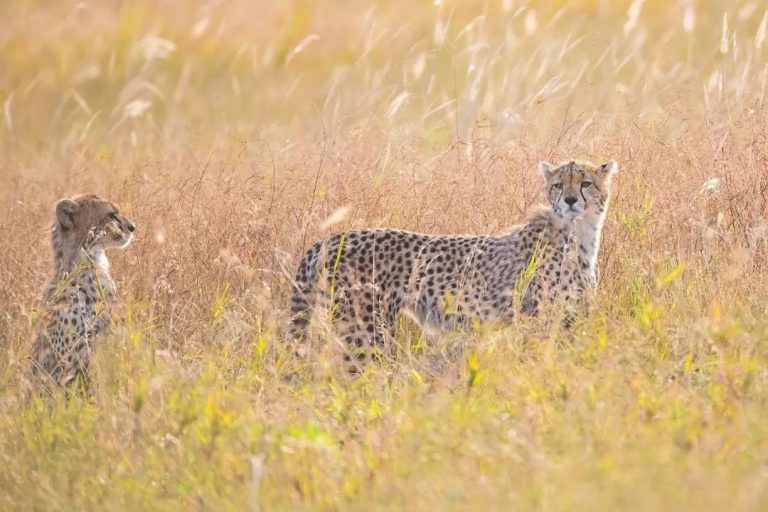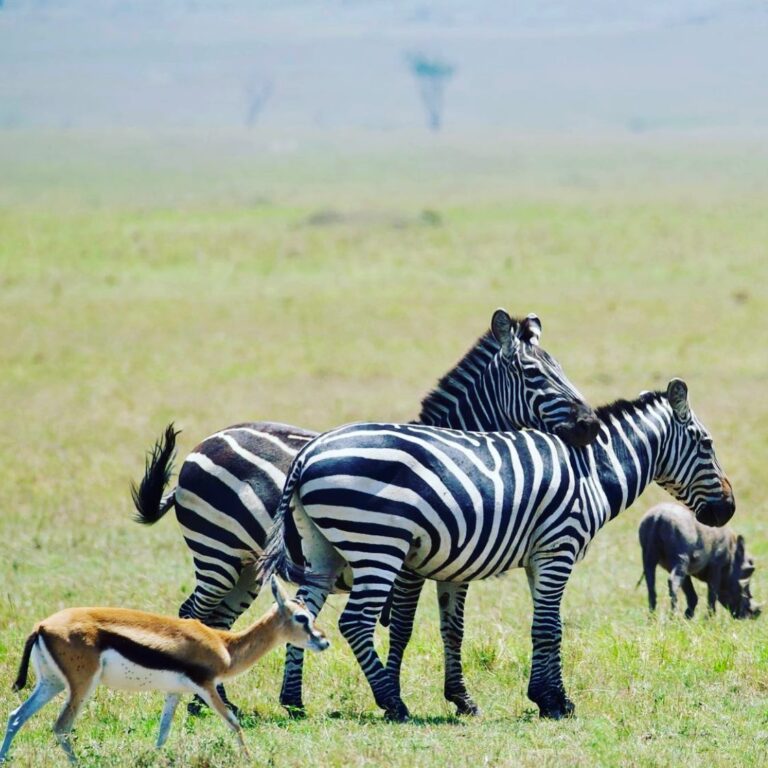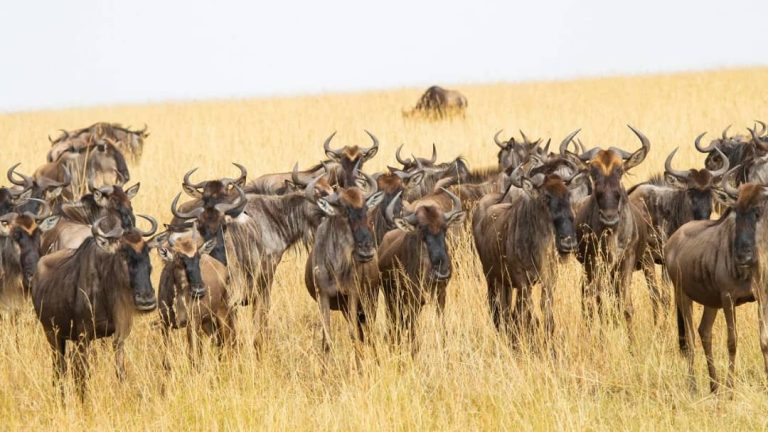The Migration Seeing the wildebeest (gnu) migration in East Africa is one of the most spectacular wildlife sightings in the world. Almost 2 million animals roam the plains of East Africa. Still, it can be surprisingly hard to find them in the vast area that they cover, as their movements are governed by the rains, and predicting their location can be a gamble. We designed this itinerary to include all the areas frequented by the migration on their annual route – this virtually guarantees that you will see them!
A brief outline of the migration movements:
- From December to April the migration spreads out over the Southern Plains of the Serengeti. Depending on the rains they move from the Gol Kopjes in the East to the Moru Kopjes in the west. This area is easily accessible from the centrally located Seronera. (We stay in the Kisura Kenzan Tented Camp.)
- Between May and August, the migration slowly moves through the western corridor and into the Ikoma and Grumeti Wildlife Management Areas. These areas are outside of the Serengeti, but as there are no fences the wildlife can, and do, move around freely.
- From September to the end of November, the migration crosses into the Masai Mara in Kenya during the short rains. This is a relatively small park compared to the vast Serengeti and the wildlife tends to be very concentrated. (We stay at the Mara Eden Safari Camp to take advantage of its proximity to the migration and not to mention its own private entrance gate to the park.) Highlights Lake Manyara National Park, Village tour with traditional lunch, Centre for disabled kids, School visit, Masai Boma visit at Mto wa Mbu, Tarangire National Park, Ngorongoro Crater, Serengeti National Park, Lake Victoria boat excursion, Masai Mara, Karen Blixen (Out of Africa) Museum, Sheldrick Elephant Orphanage, Amboseli National Park. Breakfast and dinner will be prepared by the lodge where you are staying. They will also prepare lunch or a lunch pack depending on the itinerary for the day. Please advise us of any special dietary requirements in advance.
Upon your arrival, you will be collected from the airport and transferred to your lodge in the lush forests surrounding the town of Arusha. If you arrive early enough, you will have an opportunity to explore the lodge grounds, take a dip in the swimming pool or partake in any of the offered additional activities available. Overnight: Moivaro Coffee Plantation Lodge or similar.
Meals: Dinner at Moivaro Coffee Plantation Lodge or similar.
Distance: 50 km Driving time: 1 hour
Your safari begins after breakfast this morning. Our first stop is Arusha town, for any last-minute purchases before we head off on an exciting safari experience! We set off towards Lake Manyara National Park, with the drive being in the region of about 2 hours. Manyara NP is not only known for its large flocks of flamingos but also for the elusive tree-climbing lions.
Overnight: Rift Valley Photographic Lodge or similar.
Meals: Breakfast at Moivaro Coffee Plantation Lodge or similar; Picnic lunch from Moivaro Coffee Plantation Lodge;
Dinner at Rift Valley Photographic Lodge or similar.
Distance: 200 km Driving time: 4-5 hours (including game drive speeds)
After breakfast, we set out to experience the cultural diversity of Mto-wa-Mbu, starting at the market and visiting a Chagga family producing banana beer and passing by many different farms. On the way, your guide will introduce you to the various fruits and vegetables growing in the area and explain the irrigation system that sustains local crops. After having a delicious, home-cooked meal in a local Mama’s home, we visit the nearby center for disabled kids and school. Late afternoon we enjoy a visit to the Maasai Boma for the cultural encounter of a lifetime. The Maasai people are semi-nomadic herders, who choose to live a traditional lifestyle and are known for their distinctive traditional attire. On completion, we return to the lodge for dinner & overnight.
Overnight: Rift Valley Photographic Lodge or similar.
Meals: Breakfast at Rift Valley Photographic Lodge or similar;
Lunch at a local Mama’s house; Dinner at Rift Valley Photographic Lodge or similar.
This morning we depart early for a game drive in the world-renowned Ngorongoro Crater. For many this wildlife spectacle is the pinnacle of their safari experience. The Ngorongoro Crater boasts all of the ‘Big 5’, including a small population of endangered black rhinos. After a picnic lunch, we head towards the Serengeti through the stunning Southern Plains. This is the area that the Serengeti is best known for – the endless, undulating grass savannah with rocky outcrops that serve as isolated wildlife refuges. Overnight: Kisura Kenzan Tented Camp or similar. Meals: Breakfast at Rift Valley Photographic Lodge or similar; Picnic lunch from Rift Valley Photographic Lodge; Dinner at Kisura Kenzan Tented Camp. Distance: 400 km (including the Crater) Driving time: 6-7 hours (mostly at game drive speeds)
spending a full day game driving around the Seronera area of the Serengeti. The Serengeti is divided into three main areas: The Seronera is the most central and accessible region and this is where the Park HQ is based, as well as most of the larger lodges and busier campsites. This is the part of the Serengeti that you will have seen in wildlife documentaries, characterized by the open plains of grassland, packed with animals. The Seronera River is the lifeblood of the Serengeti and this area is renowned for great game viewing all year round. It is also particularly good for lion and cheetah sightings, as well as the most elusive of all big cats, the leopard.
Overnight: Kisura Kenzan Tented Camp or similar.
Meals: Breakfast at Kisura Kenzan Tented Camp; Picnic lunch from Kisura Kenzan Tented Camp; Dinner at Kisura Kenzan Tented Camp.
PRICING PER PERSON
-
2 Pax:
